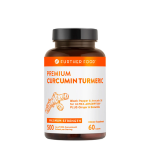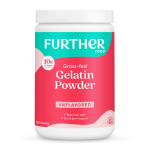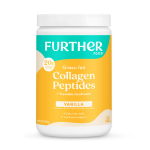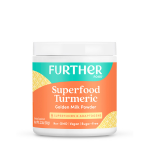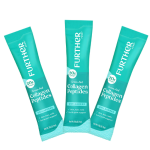I Hated My Body from a Young Age, But the Paleo Lifestyle Changed (and Saved) Me
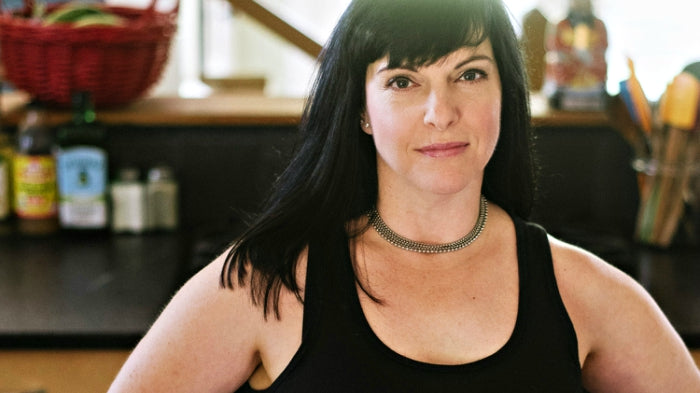
I have excellent habits 95 percent of the time. I sleep eight to nine hours per night to recover from and prepare for lifting heavy barbells, occasional sprints, and plenty of yoga and walking. I keep the house stocked with paleo ingredients and cook nutrient-dense meals so my husband Dave and I can eat real food every day.
Then on rare occasions, I indulge. I become a temporary slug and give in to the temptation of corn-based chip products, buttered popcorn, an icy-cold glass of Prosecco, or a shot of Ouzo. I should mention that I have a known whipped cream problem.
These minor transgressions are possible because I make deposits in the good health bank the rest of the time. Every workout, every good night's sleep, every paleo meal is a deposit, so that every once in a while, I can make withdrawals for a food treat.
This way of living started about five years ago when I made the switch to the paleo diet. Before then, I didn't have such excellent habits. From grade school to the day I graduated from college, I was a chubby nerd. My parents are both exceptionally good cooks — my dad brought his restaurant training home and my mom won almost every cooking contest that she entered. By the time I was about eight, I was wearing Sears “Pretty Plus” jeans, mostly because I really
liked food, but also because I really didn't like to sweat. After a broken ankle and vicious playground taunts, I stuck with reading, practicing the piano, and roller-skating to the library. I don’t know how many gym classes I missed because I was “sick” or “forgot” my gym clothes. I do know that my P.E. attendance put my otherwise stellar grade point average in jeopardy.
Even though I avoided sports, I secretly admired the athletic kids; they walked taller than the rest of us. When I was in tenth grade, my dad took me to Annapolis to see the Navy band play a concert, and for about three weeks, I was determined to get in shape so that I could apply to the Naval Academy. I abandoned that dream because I was incapable of doing pushups and sit-ups — and I was too embarrassed and overwhelmed to ask for help.
Truthfully, I'm not sure that I was even upset at the time. It seemed like such a pipe dream, as unrealistic as trying to be a supermodel or astronaut. I knew I was smart, and I loved playing the piano. But sports? They weren't for me. I believed I wasn't a “born athlete” and that it was my lot in life to be uncoordinated and overweight.
For most of my life, I was haunted by a deep desire to be different than I was. To be thin. To feel confident. To break the cycle of thinking of food — and my behavior — as “good” and “bad.” I joined Weight Watchers and eventually became a Lifetime Member with a weight loss of more than 50 pounds. I joined a CrossFit gym and learned to love being scared by my workouts. I developed a deep affection for lifting barbells.
As an adult, I look back on teenage-me and wish I could comfort that girl and let her know that she'd eventually find her way to being athletic. I started working out regularly in my early 20s because I was tired of feeling bad all the time. Once I discovered that I liked moving, I voraciously tackled as many activities as I could: triathlon, long-distance cycling, running, kickboxing, step aerobics, inline skating, roller derby, CrossFit... I wanted to do it all.
But despite my successes, it was still my habit to celebrate and to grieve and to stress out and to relax with food. Although I worked out regularly, I didn't feel as strong — inside or out — as I wanted to. I had insomnia, allergies, and stomach aches. My body didn’t feel like it belonged to me.
In 2008, I learned I had a nodule on my thyroid.
The risk of cancer was high, so I had the nodule surgically removed, and the doctor hoped that the remaining half of my thyroid would continue to function. It held on for a few months, but then stopped working. That was a very difficult time. It was like constantly having a case of the blues. I was sluggish, foggyheaded, and desperately worried about re-gaining all the weight that I'd worked so hard to lose.
Then I found Whole9 and the Whole30.
It was surprisingly easy for me to give up grains, despite my deep affection for toast, but saying goodbye to my standard breakfast of blueberries with milk almost pushed me to the edge. I did not approach the paleo rules with an open heart. But I committed.
I followed the eating guidelines. I made it a project to get eight hours of sleep every night. I worked with my doctor to try to find the right doses for my thyroid hormones. I was on track with my nutrition, but my training was all wrong for a girl with no thyroid. The constant physical stress of my sometimes twice-a-day workouts and beat-the-clock CrossFit — without restorative activities like yoga, meditation, and walking to balance it out — took its toll. I was diagnosed with adrenal fatigue.
I felt like I failed somehow, like it was my fault. As a former fat kid, my internal voice was saying very mean (and untrue) things, like, “Your thyroid is just an excuse. You’re lazy — you’ve always been lazy — and now you can just be fat and lazy and useless like you deserve.”
That was a pretty dark time. I distinctly remember walking around my neighborhood and almost stomping my feet, I was so angry to be going for a walk instead of going to the gym. Now I realize that was a pretty good sign that things needed to change, but I was so stuck in it, I couldn’t see.
It made me realize that the effects of the thyroidectomy and fatigue were not just going to magically going to disappear. This was real, and I was different. I couldn’t do things the way I used to, and no amount of pushing myself or trying harder was going to change that. Accepting that was my first real step, I think, in beginning to deal with the emotional fallout of my thyroid surgery. Sure, I was taking my thyroid hormones every day, and I had a scar on my throat, but I'd convinced myself that “other than that everything was fine.” I had to figure out what my new normal would be.
So I started over... again.
I like plans a lot, so I immediately tackled the whole “heal my body” project with as much commitment as I used to bring to my CrossFit workouts. I needed to walk, I needed to practice yoga and meditation, and I needed to find a way to deal with the emotions attached to the big changes I was going through.
As part of my “heal yourself” plan, I was instructed by just about every kind of expert to engage in yoga. In a huff, I looked at the schedule for the yoga studio near my house and thought, “Fine! Here’s a class called kundalini at 6:30 am. I can do it before work. Fine! Done. Stupid yoga.”
I went on the first day and could not fathom what I had gotten myself into. We did the whole class with our eyes closed. We chanted in what seemed like a nonsense language. We covered ourselves with Mexican blankets and listened to the instructor play the gong.
It was completely weird, and I hated it. And I went back two days later. And three times the next week, and three times the next week... and, well... it was just what I needed.
Kundalini is a meditative form of yoga. There are poses, sort of, but it’s really about connecting with your breath, and for me, finding peace. It was soothing and challenging. On the surface, it was the antithesis of CrossFit, because physically, it’s very calm. But mentally, it’s CrossFit-like in its need for concentration and discipline.
I cried many times during kundalini in the first few months, and then one day, I heard myself laughing at the end of class. Actually heard it before I felt it, I think, and I was, like, “That was me... laughing.” Things opened up for me after that. I stopped resenting the yoga and the walking. My body was healing, and I was able to start adding in some weight lifting and start entertaining the idea of “exercise” again. But I also knew I had to continue to find room for yoga and meditation; there could be no more going for broke, all the time, every time.
Four years later, that's still the case, but now I'm happy when I go for long walks, and I look forward to the escape of meditation.
What’s never wavered is my commitment to and affection for my paleo diet. I’ve been through a lot of self-experimentation in the last half decade to get back to optimal health. The solid foundation provided by the paleo diet makes it possible to measure other health and quality-of-life markers and to tinker with them. I’m more convinced than ever that this is the healthiest way for me to feed my body and mind — and it is sustainable in a way that no other “diet” has ever been.
I spent the first 30 years of my life at war with my body — with my short legs and stocky frame, with junk food cravings and emotional eating. Banishing grains and dairy, in comparison to three decades of negative self-talk and shame, has been easy.
And in return for giving up grains, dairy, and sugar, I've gained a partnership with my body that uses good food as fuel. Now I know when and how often I can indulge in non-paleo foods, and I enjoy those “once in a while” treats like never before. The food tastes a lot better when it's savored and is not followed by a chaser of self-recrimination. I finally know how to truly celebrate on special occasions, while I live healthfully and happily.
Excerpted and adapted with permission from Well Fed 2: More Paleo Recipes for People Who Love to Eat.
Want more? You might also like:
9 Paleo-Friendly Foods I Always Have in My Kitchen
Confused by Paleo Breakfasts? Approaching It This Way Will Change How You Eat Forever
30 Reasons Everyone Should Whole30
Finding Relief from Multiple Sclerosis (MS) with a Paleo Diet
Want to see more quick & easy paleo meals? Check out Melissa’s book Well Fed Weeknights: Complete Paleo Meals in 45 Minutes or Less for delicious recipes!
Can't wait for it to ship?! Try out 18 more recipes from Melissa's new book in the meantime.
Note: PLEASE consult with your doctor before making any changes to your diet or medications. The material on this site is provided for educational purposes only, and is not to be used for medical advice, diagnosis or treatment.








